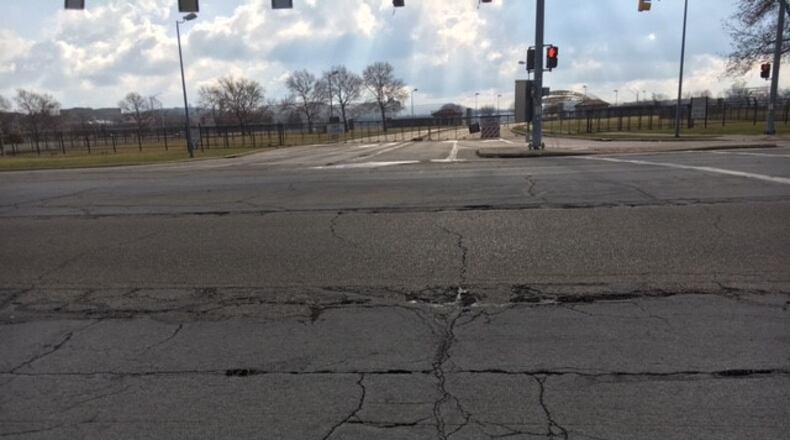Kathy Bartlett, director of public service for the city of Riverside, said the city will bid the project out in the first week of December, but work won’t start until early spring 2021.
“It does feel great to have a project ready to go in spring 2021 with everything we faced” in 2020, said Riverside Mayor Pete Williams.
There will be two parts to the overall $3.4 million project, improving Springfield Street both to the east and west of Harshman Road, for a total of about .75 or so of a mile, Bartlett said Monday.
Eastbound on Springfield from Harshman takes motorists to the road that leads to the Air Force Museum, Bong Street or gate 28B. Continuing past the museum gate eastbound on Springfield, traffic reaches Wright-Patterson’s Gate 1B, which has been closed since March.
It’s one of the most prominent and well traveled roads in the city, Williams said.
“We need that to be a nice road,” he said.
The first part of the Springfield Street project to be tackled will be east from Harshman toward Riverside’s municipal border near the overpass. The work on Springfield from Harshman to the west will cover about 1,500 feet, and that part of the project isn’t expected to start until 2022, Bartlett said.
The project will shrink Springfield down to two lanes while adding bike lanes, which Bartlett called a “road diet” meant to slow traffic.
“People are exceeding the speed limit,” she said. “And it’s dangerous to have people driving at excessive speeds, when you have the (base) gates there, where people are going to be turning into. You have people stopping, and rear-end collisions and things like that.”
The project also received federal funds, about $918,000, from the Miami Valley Regional Planning Commission, an award that was five years in the making, Bartlett said. Ohio Public Works Commission funds of $1.5 million also played a role in funding.
Wright-Patterson proposes to use the Ohio Military Facilities Commission money to support the project, a commission agenda says.
“They wanted it from day one,” Bartlett said of Wright-Patterson’s support for the project. “It couldn’t happen fast enough, and our residents knew that it was in dire shape and needed some attention.”
“The project will provide improvements by making access to the installation and (the museum) safer and more efficient,” the Ohio Military Facilities Commission agenda said. “Reducing the number of travel lanes will have a traffic calming effect and promote slower/safer speeds in line with the posted speed limit on Springfield Street.”
The world’s largest military aviation museum, the National Museum of the U.S. Air Force has more than 350 airplanes and missiles and thousands of artifacts on more than 19 acres of exhibit space.
Each year more than 800,000 visitors from around the world visit the museum.
Part of the Ohio Adjutant General’s Department, the Ohio Military Facilities Commission is made of up of nine commissioners appointed by the House, Senate and governor’s office to administer state funding for capital improvements on military and defense installations in Ohio.
The commission met Nov. 16.
About the Author



